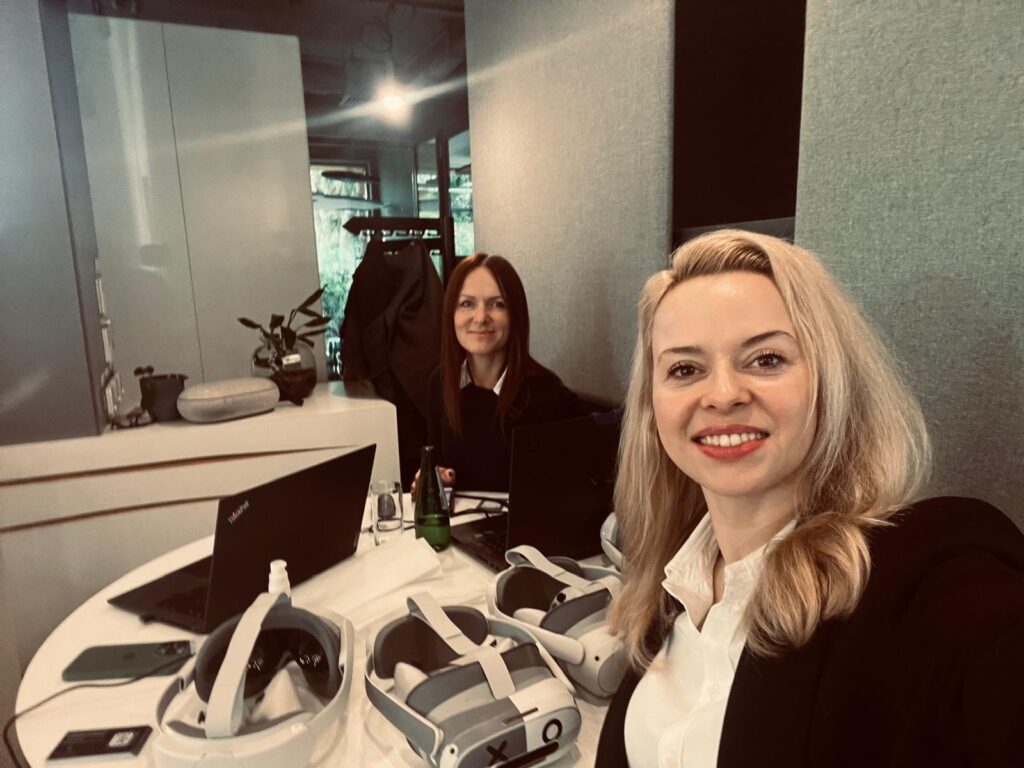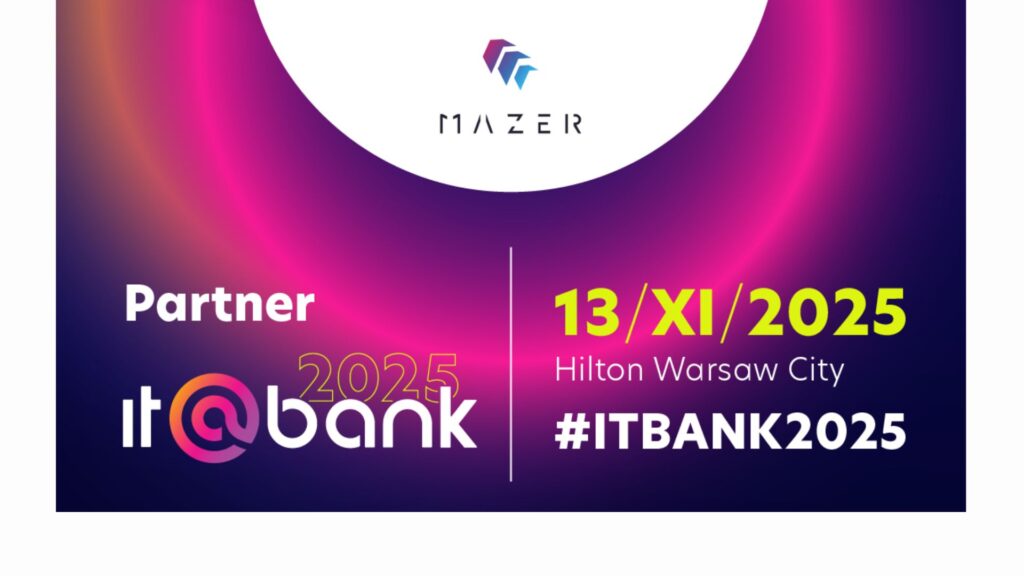How to Resell VR Training Programs and Build a Scalable Revenue Model?
Table of Contents:
For training companies, technological evolution (such as VR) isn’t just an opportunity to impress clients. It’s a gateway to building a scalable, recurring, and future-proof revenue model. Learning how to resell VR training courses effectively is a strategic move that can turn your intellectual property into a powerful, steady income stream.
Key Takeaways
- Shift from one-offs to reusable modules: Build modular VR courses (compliance, onboarding, safety, communication, leadership) that adapt across clients and industries instead of bespoke projects.
- Design for fast customization: Use platform capabilities (e.g., Mazer Trainer) to swap branding, policies, and scenario details without rebuilding core interactions—reducing delivery time and personalization costs.
- Leverage white-labeling to expand reach: Offer branded versions so partners and local training providers can resell under their banner, unlocking new markets without proportional production effort.
- Adopt recurring licensing models: Prioritize subscriptions (per-user or org-wide) for predictable revenue; complement with one-time licenses plus update fees or thematic bundles, and clearly communicate ROI.
- Instrument with analytics: Track progression, completions, quiz scores, and usage to prove impact, guide improvements, and support renewals and upsells.
- Continuously update content: Refresh modules as regulations and policies change; proactive updates increase perceived value and retention.
- Build a partner ecosystem: Provide marketing assets, enablement, and technical support to resellers; the network effect scales distribution, languages, and vertical coverage.
- Position with data: Use market stats and VR training benchmarks in sales materials to highlight measurable outcomes (e.g., faster onboarding, better retention, fewer incidents).
Building Reusable and Scalable VR Training Content
To successfully resell VR training, the first step is content creation, specifically, building training modules that are reusable, adaptable, and relevant for a broad range of clients. Instead of producing one-off programs for each organization, focus on developing modular training units that cover universal needs. Consider courses that address compliance, onboarding, safety, communication, or leadership, as these are areas where businesses across various sectors face common challenges.
When working with a VR platform such as Mazer Trainer, these modules can be designed with adaptability in mind. The interface allows you to swap out branding, tailor scenarios to different policies, or adjust certain workflow details without restructuring the underlying interactive content. For example, a generic customer service simulation can easily be modified for a bank, retail store, or call center simply by updating the virtual environment’s branding and the specifics of the customer interactions.
By building this kind of versatile library, you lower the cost and effort of personalizing content for each new client. You quickly go from single-use builds to scalable, repeatable products that form the basis of your resell VR training business.
When you’re ready to grow, here’s how to scale VR training programs.
Customization and White-Labeling
Companies looking to implement third-party training programs often want their assets to reflect their own corporate identity. Leveraging Mazer Trainer’s white-labeling features means you can effortlessly customize courses with a client’s logo, brand colors, and internal policies, without rewriting core content. This flexibility makes your VR training modules far more attractive to prospective customers. It enables you to form partnerships with other training companies eager to resell your content under their banners.
With white-label options, your reach immediately extends beyond your direct clients. You empower local or niche training businesses to bring your courses to their markets, increasing your overall exposure and revenue potential.
What is The Right Revenue Model for VR Training Reselling?
When it comes to monetizing your VR training content, flexible licensing models are key to achieving sustainable, predictable income. Subscription licensing is by far the most popular model: clients pay a regular monthly or annual fee for access to your library of VR courses, often structured on a per-user or organization-wide basis. This model means your revenue grows each time a new business subscribes, without significant incremental work to deliver the product.
Alternatively, you can offer one-time purchase deals paired with ongoing maintenance or update fees, or even sell thematic course bundles suited to different departments or industries. However, you price your offerings, be transparent about the value each option delivers, especially since VR’s measurable impact (through improved retention, faster onboarding, or reduced incidents) is usually easy to demonstrate.
Mazer Trainer supports SaaS-style delivery, giving you and your clients flexible access to content, real-time updates, and clear usage tracking.
Tracking, Analytics, and Continuous Improvement
Another core part of building a scalable revenue model when you resell VR training is the integration of analytics and progress tracking. With Mazer Trainer, you can monitor how each client’s learners interact with your courses: how far they progress, which modules they revisit, and what results they achieve in built-in quizzes or interactive challenges. Publishing regular reports not only reinforces the business value of your content but also helps you refine and expand your training library based on real feedback and identifiable gaps.
Maintaining a habit of regular content updates and active client support is crucial for retaining subscribers. Regulations and organizational priorities shift rapidly, particularly in compliance-heavy industries. By proactively updating your VR modules and notifying clients, you reinforce their reliance on your offerings, keep your content evergreen, and justify subscription renewals and upsells.
If you want to learn more about how to measure and present these results, see Measuring the Impact of Your VR Training Programs.
Growing Your Partner Network
The real scalability in reselling VR training comes from building and supporting a partner ecosystem. By supplying marketing resources, training materials, and technical support for your resellers, you enable other professionals to carry your content into new markets, industries, and even languages. This networked model multiplies your impact and unlocks exponential growth, allowing you to focus on what you do best, creating state-of-the-art VR training content. Position your portfolio with market data, share VR training statistics, and highlight key trends in VR training.
Conclusion
Reselling VR training is no longer the domain of tech giants or custom developers. With platforms like Mazer Trainer, any training provider can develop high-quality, adaptive content and monetize it repeatedly across clients and partners. By prioritizing modular design, enabling customization, selecting the right licensing models, leveraging powerful analytics, and building a partner network, you can transform your VR expertise into a sustainable, recurring revenue machine.
Why should training companies consider reselling VR courses?
Reselling VR training courses allows companies to build a scalable, recurring, and future-proof revenue model. Instead of creating one-off programs, reusable modules can be monetized repeatedly across clients and industries.
How can VR training content be made reusable and scalable?
By creating modular courses that cover universal topics such as compliance, onboarding, safety, or leadership. Platforms like Mazer Trainer make it easy to adapt branding and policies without rebuilding the core content.
What is the role of customization and white-labeling in VR training reselling?
Customization and white-labeling allow clients or partners to adapt VR training with their own branding, logos, and policies. This makes content more appealing and enables other training companies to resell courses under their own name.
What revenue models work best for VR training reselling?
Subscription licensing is the most popular model, offering recurring monthly or yearly income. Other models include one-time purchases with update fees or thematic course bundles. Transparency about value and ROI is crucial in pricing.
How do analytics improve VR training programs?
Integrated tracking shows learner progress, quiz performance, and module usage. These insights allow providers to refine content, publish impact reports, and keep training relevant—strengthening client retention and renewals.
How can a partner network scale VR training reselling?
By enabling other training providers to resell your VR modules with marketing resources, training, and technical support, you multiply your market reach. This network effect drives exponential growth across industries and regions.

Author: Rafał Siejca
Rafal has over twenty years of corporate experience, including roles at Millennium Bank, Comarch, and leading software teams at PZU, one of Europe’s largest insurance companies. As one of Poland’s few true VR experts with a decade of experience, he ensures timely, high-quality project delivery as CEO and CTO.










